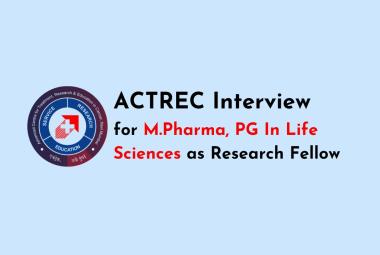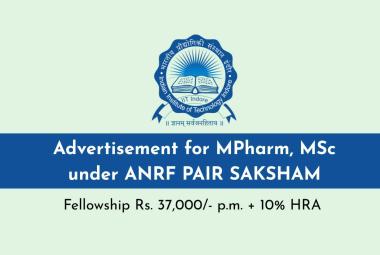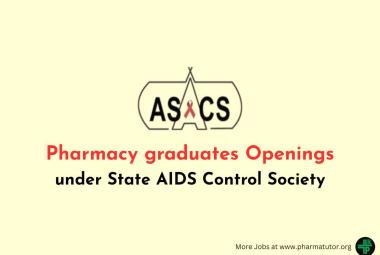About Author: Dhaval G. Shah*, Dr Manish J. Patel, Dr Laxman J. Patel
Department Of Pharmaceutical Chemistry,
Shree S. K. Patel College Of Pharmaceutical Education & Research,
Ganpat University, Kherva. Dist: Mahesana, Gujarat
Abatract
Human Immunodeficiency Virus is the causative agent of Acquired Immuno Deficiency Syndrome (AIDS), a disease which has claimed twenty millions lives worldwide in the last two decades. Recently Imidazole derivatives, such as N-aminoimidazoles (NAIMS) have been discovered as novel anti- HIV agents. Herein, the results of 2D-QSAR analysis on these inhibitors have been reported. Quantitative Structure Activity Relationship studies have been conducted on a series (25 compounds) of NAIMS with selective HIV inhibition activity using ChemOffice v.8.0 software. The best prediction have been obtained for anti-HIV activity (R2=0.82, Q2=0.73). The equation emphasized the importance of MORAN AUTOCORELATION (BY ATOMIC MASS), GAERY AUTOCORELATION (BY ATOMIC , SHAPE PROFILE(RANDIC MOLECULAR PROFILE), MAXIMAL ELECTROTOPOLOGICAL EGATIVE VARIATION and Km parameters on biological activity. The equation is validated by test set (8 compounds). The information obtained from this 2D- QSAR may be utilized in the design of more potent NAIMS analogs and anti-HIV agents.
[adsense:336x280:8701650588]
Reference ID: PHARMATUTOR-ART-1119
Introduction
The novel anti-HIV drugs are needed world wide and therefore a search for novel anti-HIV agents with newer mechanism of action has become extremely important subject of investigation(Clerque,2004).
Compounds containing Imidazole nucleus have shown a variety of pharmacological action and many of them have gained worldwide acceptance in clinical practice.(Ren and et al., 2000) (Silvestry and et al.,2002) (Sung and et al., 2008)Recently Imidazole derivatives such as N-Aminoimidazoles (NAIMS) has been discovered as novel anti-HIV agents which have been found to function either through the classical nonnucleoside reverse transcriptase inhibitors (NNRTIs) type of action or through an unknown mode of action which may be some way related to the inhibition of immediate post integration or early transcription step (Clerque, 2004) (Lagoja and et al., 2003)
In the present study, QSAR studies were performed on Aromatic / Heteroaromatic N-Aminoimidazole derivatives in order to correlate the structural requirements for enzyme inhibition which may be useful in designing new molecules against HIV.
Results and Discussions:
Among the several generated QSAR equation; the best equation was selected on Standard deviation (S), sequential Fischer test (F), bootstrapping (r2), chance, cross validated correlation co-efficient (Q2) value, SPRESS, standard deviation of error prediction (SDEP) and predictive squared correlation co-efficient of the test set (r2pred).
[adsense:468x15:2204050025]
QSAR equation for anti-HIV activity of the NAIMS derivative is
B.A. = -1.19102 - (4.96648*MATS5m) - (0.35237*GatS8e) - (0.17321*SP19) - (0.30298*MAXDN) + (1.422081*Km)
Statistical parameters:
n= 25, r= 0.917816, r2= 0.842386, variance= 0.0550818, std= 0.234695, F= 20.3095, FIT= 203.095 Bootstrapping r2= 0.865486, chance < 0.001, Q2= 0.73521, Spress= 0.304197, SDEP= 0.265192 r2 pred= 0.659791.
On the basis of various significant statistical parameters; best equation was selected as a representation to explore the factors responsible for anti-HIV activity. Equation for anti-HIV activity shows better correlation co-efficient r = 0.917816 [pIC50] which accounts for more than 80% of the variance in the activity (table-1 fig-2). The intercorrelation among parameters is less than (0.3), indicating orthogonality among the descriptors used for deriving the equations. In multivariable equation, the dependent variables can be predicted from a linear combination of the independent variables. The data showed an overall internal statistical significance better than 99.9% as it exceeded the tabulated F value (20.3095). The equation was further tested for outlier by the Z-score method and no compound was found to be an outlier; suggesting that the equation is able to explain the structurally diverse analogs and is helpful in designing more potent compound using physicochemical parameters. The predictive power of the equation was validated by Leave-One-Out cross validation method. The cross validated square correlation co-efficient (Q2= 0.73521); predictive residual sum of square (Spress=0.304197); standard deviation error of prediction (SDEP=0.265192 ) suggested a good internal consistency as well as predictive ability of the equation. The bootstrapping r2 is at par with conventional squared correlation co-efficient (r2). The robustness and applicability for further optimization of the molecule was explained by significant r2pred value. The selected equation fulfills the statistical validation criteria to a significant extent to be useful as theoretical basis for proposing more potent compounds.
NOW YOU CAN ALSO PUBLISH YOUR ARTICLE ONLINE.
SUBMIT YOUR ARTICLE/PROJECT AT articles@pharmatutor.org
Subscribe to Pharmatutor Job Alerts by Email
FIND OUT MORE ARTICLES AT OUR DATABASE
Equation for anti-HIV activity shows that parameters like MORAN AUTOCORELATION (influence by atomic mass), GAERY AUTOCORELATION (influence by electrnegativity), SHAPE PROFILE, and MAXIMAL ELECTROTOPOLOGICAL EGATIVE VARIATION contributed in biological activity negatively while Km contributed positively towards biological activity.
Materials and Methods
Data set:
Reported data on series of NAIMS (Lagoja and et al., 2003) 33 compounds has been taken. These 33 compounds were divided into a training set of 25 compounds and test set of 8 compounds. The IC50 data were used for QSAR analysis as dependent parameters after converting them into reciprocal of the logarithm of IC50 (pIC50). The ratio of training set to test set is approximate 3:1.
Energy minimization and Geometry optimization:
The molecular structure of all 33 compound were sketched using Chem3D Ultra (version 8.0) software of Chemoffice and subjected to energy minimization technique using Allinger’s Molecular Mechanics (MM2) force fields followed by geometry optimization using semi empirical Quantum mechanics based on AM-1 (Austin Model-1). Hamiltonian approximations method and closed shell (restricted) wave function available in MOPAC module by fixing Root Mean Square (RMS) gradient as 0.1 and 0.001 kcal/molA0 respectively was used for calculating partial atomic charges and electronic density on various atoms. Charges were kept as mulliken and maximum numbers of iterations was set to 1000.
Various physicochemical parameters were calculated with the help of DRAGON (version 1.11 2001). Total 853 parameters were calculated. Out of these 853 parameters only 5 parameters were used in development of best equation. These 5 parameters were shown in the table-4.
Molecular descriptors and Statistical methods:
The physicochemical parameters were taken as independent variables and biological activity (in terms of negative logarithms of biological inhibition constants) values as dependent variable. The best equation was developed with the help of best correlation matrix and regression analysis.
The predictive power of equation was validated by LOO cross validation equation Predicted residual sum of square [PRESS], cross validated correlation co-efficient r2 (Q2 ) and SDEP were considered for validation of this equation. The result from cross validated analysis were expressed as the cross validated squared correlation co-efficient Q2.
Q2 = 1-∑(Ypred – Yact)2 / ∑ (Yact - Ymean)2
Where Ypred, Yact, Ymean are predicted, actual, and mean values of the target property (pIC50) respectively. ∑ (Y pred – Y act)2 is the PredictiveResidual Error Sum of Squares (PRESS).
PRESS is an important cross validation parameter as it is a good approximation of the real predictive error of the equations. To further assess the robustness and statistical confidence of the derived equations, bootstrapping analysis was performed. The r2bs is an average squared correlation co-efficient calculated during validation, which is computed from a subset of variables used one at a time for validation. The statistical parameters considered to compare and select the generated QSAR equations were correlation co-efficient(r) , standard deviation (s), sequential Fischer (F) test, cross validated correlation co-efficient (Q2). To validate the derived equation, the overall predictive ability of that analysis was evaluated by the terms r2pred and calculated using this formula;
r2pred = SD-PRESS/SD
where SD is the sum of the squared deviation between the biological activities of the testset molecules and the mean activity value of the training set molecules. PRESS is the predictive error sum of squares derived from Leave-One-Out methods
Conclusion
The fundamental properties of the molecule that are overwhelmingly involved in selective activity of N-Aminoimidazole derivatives are geometrical, electronic, topological and thermodynamic parameters. It is apparent from selected QSAR equation that the geometric ((MATS5m, SP19) electronic (GATS8e), topological (MAXDN), and thermodynamic (Km) play an important role in the selective inhibition of HIV-I activity. Based on understanding from selected equation, it may be concluded that N-Aminoimidazole derivatives having larger geometry or bulky group decrease the anti-HIV activity. Where as derivatives which are having smaller shape & bearing electronegative substituent improve the anti-HIV activity.
References
- E. D. Clerque HIV-chemotherapy and –prophylaxis: new drugs, leads, and approaches. J biochem cell boil 36:1800(2004)
- K. Maeda, T. Osata, H. Umezawa, A new antibiotic-Azomycin. J Antibiot (Tokyo) 6:182-184 (1953)
- J. Ren, C. Nichols, L. E. Bird, T. Fujiwara, H. Sugimoto, D.I. Stuart et al. Binding of the second generation non-nucleoside inhibitor S-1153 to HIV-1 reverse transcriptase involves extensive main chain hydrogen bonding. J Biol Chem. 275:14316-14320 (2000)
- R. Silvestri, G.D. Martino. Synthesis, Biological Evaluation and Binding of Novel 1-[2-(Diarylmethoxy) ethyl]-2-methyl-5-nitroimidazoles targeted at the HIV-1 Reverse Transcriptase. J. Med Chem. 45:1567-1576 (2002)
- Y. H. Sung, W.K. Kyu, K. R. Chung, J. K. Soo, H. C. Kwang, Antiproliferrative effects of 6-anillino-5-chloro-1H-benzo[d]imidazole -4,7-dione in vascular smooth muscle cells. Bioorg Med Chem. 16:644-649 (2008)
- I. M. Lagoja, C. Pannecouque, Z. Debyser, J. Balzarini, A. V. Aerschot, M. Witvtouw. N-Aminoimidazole Derivatives Inhibiting Retroviral Replication via a Yet Undefined Mode of Action. J Med Chem 46:1546-1553 (2003)
- K. J. Schaper Quant Struct Relate,18:354 (1999)
- S. Wold, L. Eriksson, QSAR: Chemometric Methods in Molecular Design, (VCH, Weinheim)2:321(1995)
NOW YOU CAN ALSO PUBLISH YOUR ARTICLE ONLINE.
SUBMIT YOUR ARTICLE/PROJECT AT articles@pharmatutor.org
Subscribe to Pharmatutor Job Alerts by Email
FIND OUT MORE ARTICLES AT OUR DATABASE









